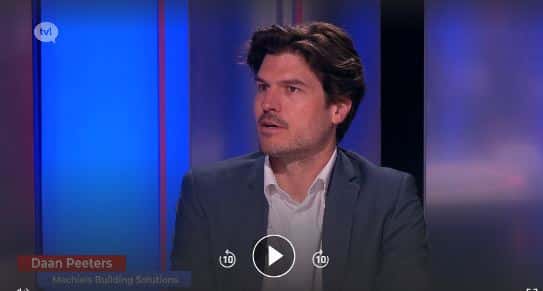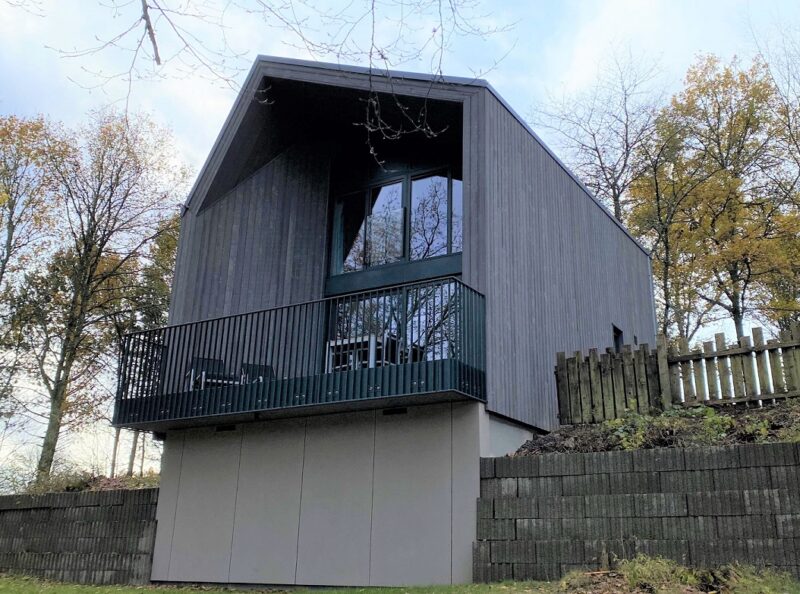WOONWERK wins first prize in the Design & Build competition for the slide-in Acaciawijk in Sint-Stevens-Woluwe.
On behalf of the social housing company Woontrots, Woonwerk Architecten, in collaboration with Dethier and Machiels Building Solutions bv, will be responsible for the replacement construction of 33 social housing units in the garden district ‘Acacia’ in Sint-Stevens-Woluwe. The combination of off-site produced timber frame construction with traditional brickwork ensures the preservation of the neighborhood’s character. The existing homes will be replaced with sustainable, biobased, and energy-efficient E=0 homes. Thanks to this approach, residents will be able to move into their new homes within a few months.

Images WOONWERK architecten/Text Architectura
The Acaciawijk is located in a relatively quiet, green area between the E40 and the Brussels Ring in Sint-Stevens-Woluwe. This garden neighborhood, built between 1950 and 1972, is characterized by winding streets with simple houses surrounded by lush greenery. The distinctive features of the houses, including red brick facades, baked roof tiles, detailed facades, and gables, contribute to the unique ambiance of the neighborhood.
OFF-SITE BUILDING Woontrots has commissioned the renovation of 33 houses in this neighborhood into sustainable, ecological homes. Preferably, they wanted to achieve this by using off-site building to facilitate a rapid transition from old to new. It was also important that residents could continue living in the same neighborhood during the works, with the help of 4 transition houses. Another principle was to strive to preserve the characteristic features of both the neighborhood and the houses.
TIMBER FRAME CONSTRUCTION The design by Woonwerk Architecten perfectly meets these requirements. Timber frame construction has been chosen for the construction of the new homes, an off-site construction method where building elements (walls, facades, floors, and roofs) are prefabricated industrially. The installation of the wind- and water-tight structure on-site takes only 1 to 2 days per house. Timber frame construction is a ‘dry construction method’, where no water or cement is used, thus preventing delays due to rain or frost.
80% LESS CO2 EMISSIONS Timber frame construction is not only fast and sustainable but also environmentally friendly. Solid wood that is completely biobased and compostable is used. A timber frame house from Machiels Building Solutions emits 80% less CO2 than a traditional house. By using an air/water heat pump, photovoltaic panels, and a boiler/heat pump, these houses have a negative energy level (E0).
THREE TYPES OF HOUSES To accelerate the timber frame construction process, a certain standardization of the houses has been chosen. Thus, 3 types of houses have been designed, sufficient to offer a suitable replacement for each existing house without slowing down the production process. Once the timber frame is ready off-site, it is inserted in the right place. Then, the new facades, which refer to the past, are traditionally bricklayed. This way, the unity of the neighborhood is preserved optimally, while the renewal is still visible. With this approach, residents will be able to return to a new home after a few months.
TRANSITION HOUSES It is crucial that residents whose houses are being rebuilt can stay in the vicinity of their social environment and remain connected to their neighborhood. Therefore, residents will be temporarily rehoused in the Acaciawijk, and 4 full-fledged but temporary and movable transition houses will also be provided.

